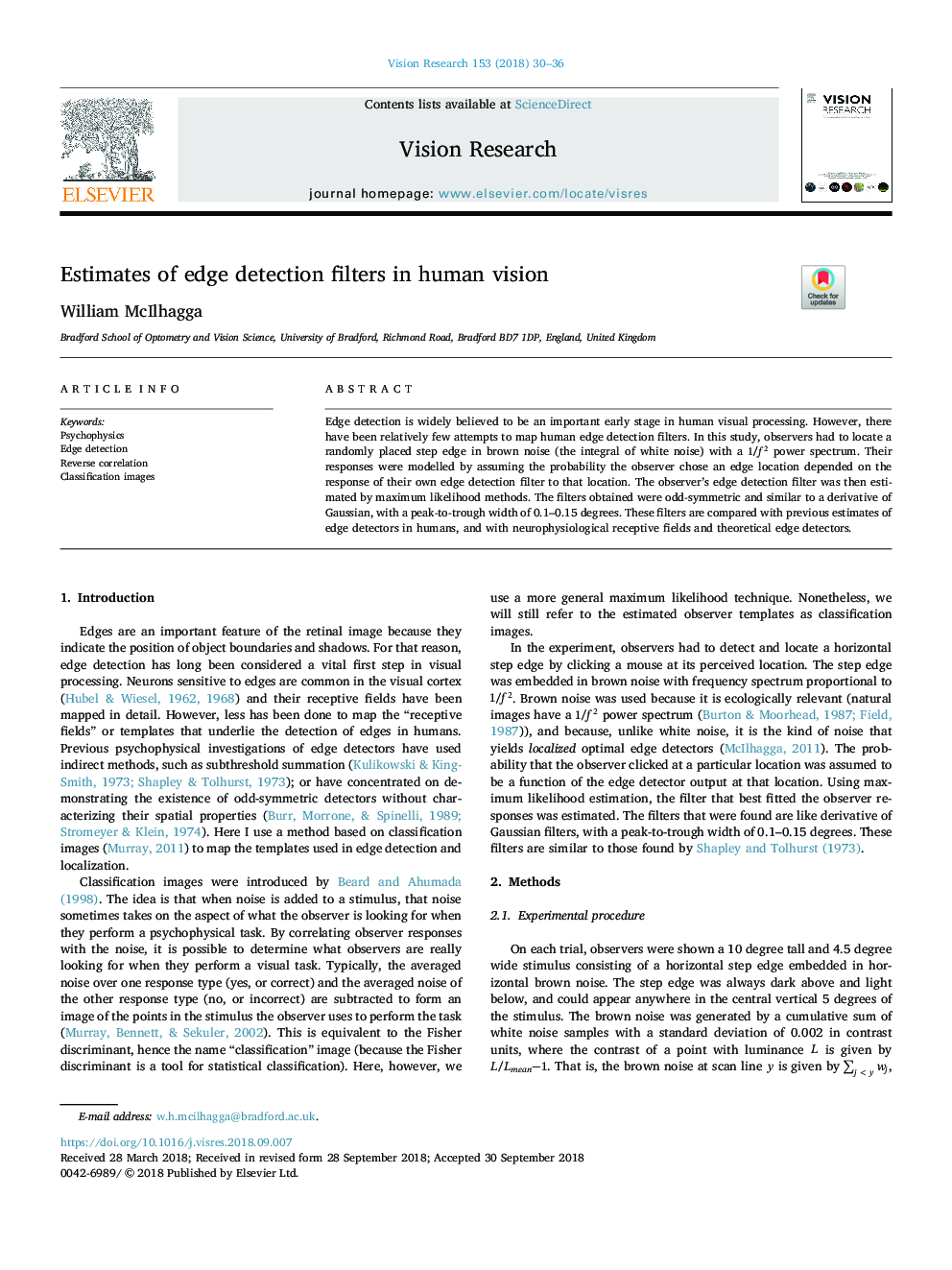| Article ID | Journal | Published Year | Pages | File Type |
|---|---|---|---|---|
| 11025392 | Vision Research | 2018 | 7 Pages |
Abstract
Edge detection is widely believed to be an important early stage in human visual processing. However, there have been relatively few attempts to map human edge detection filters. In this study, observers had to locate a randomly placed step edge in brown noise (the integral of white noise) with a 1/f2 power spectrum. Their responses were modelled by assuming the probability the observer chose an edge location depended on the response of their own edge detection filter to that location. The observer's edge detection filter was then estimated by maximum likelihood methods. The filters obtained were odd-symmetric and similar to a derivative of Gaussian, with a peak-to-trough width of 0.1-0.15 degrees. These filters are compared with previous estimates of edge detectors in humans, and with neurophysiological receptive fields and theoretical edge detectors.
Related Topics
Life Sciences
Neuroscience
Sensory Systems
Authors
William McIlhagga,
